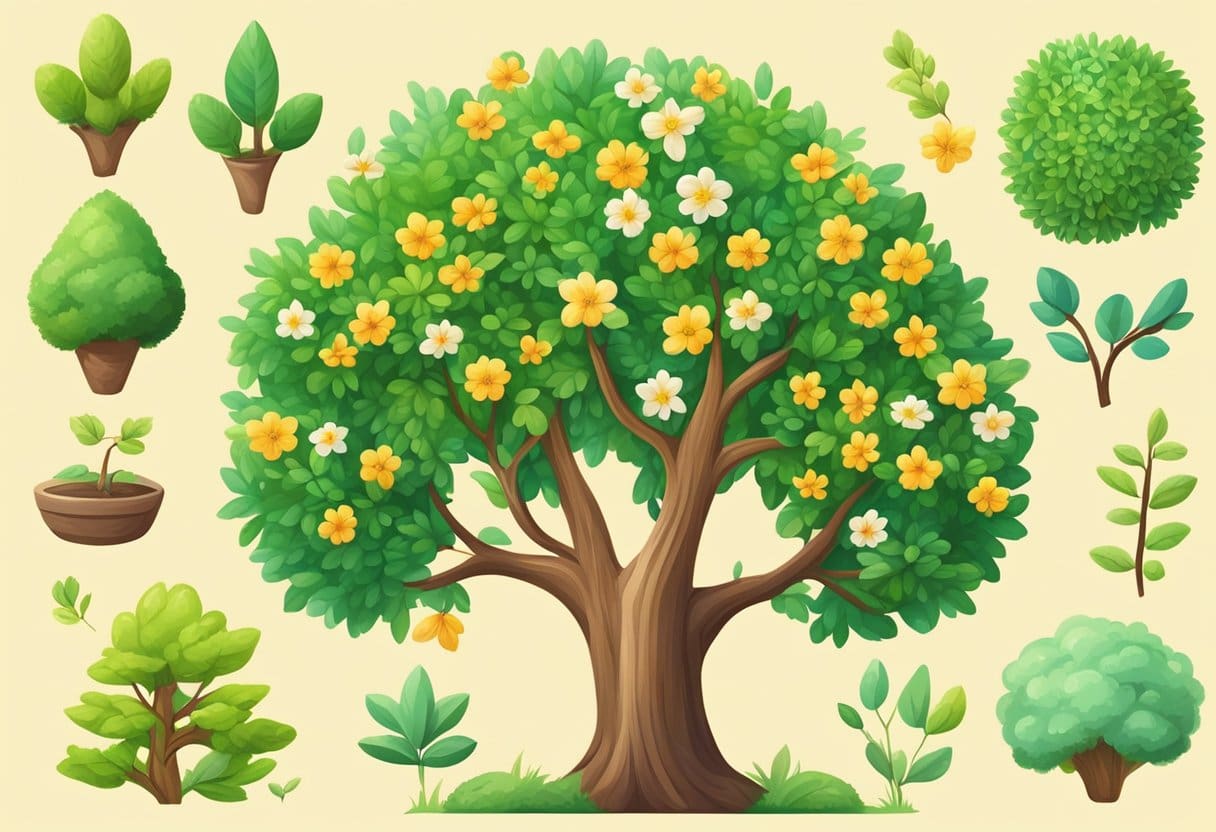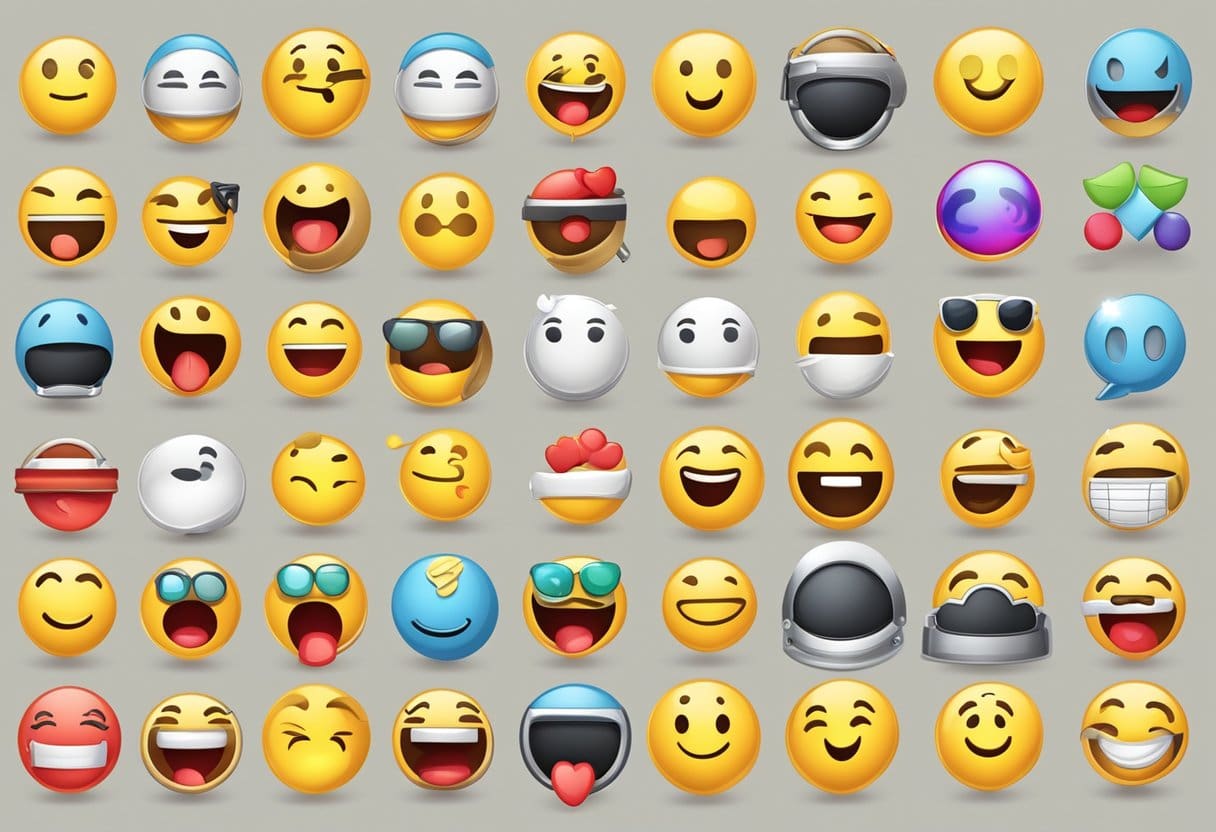What are Emojis?

Emojis are small digital images or icons used to express an idea, emotion, or sentiment in electronic communication. They are designed to convey complex messages in a simple, visually pleasing manner. You can find emojis across various platforms, such as social media, messaging applications, and website commenting systems.
Originating in Japan, emojis have become an integral part of modern communication and play a significant role in transcending language barriers. They evolved from emoticons, which were combinations of text characters to represent facial expressions. Today, emojis have expanded beyond faces and include many symbols, such as animals, nature, food, and more.
To use emojis effectively, you should be familiar with their meanings and the context in which they are appropriate. Be aware that some emojis may have different interpretations across cultures or platforms, so it’s crucial to consider your audience when using them.
When adding emojis to your text, you can copy and paste them from a comprehensive emoji list available online. These lists provide a wide selection of emojis, including smileys, animals, flags, objects, and other symbols, and allow you to insert them into your text or messages easily. By using emojis thoughtfully and creatively, you can enhance your communication and add a personal touch to your digital interactions.
List of People and Body Emojis

In this section, you will find information about various people and body emojis that can help you express emotions, actions, and situations related to human interactions. We have divided this section into three sub-sections: Hand Gestures, Family, and Person Symbols.
Hand Gestures
Hand gesture emojis are essential in conveying specific non-verbal messages or complementing your texts for better clarity. Some common hand gesture emojis include:
- 👋 Waving Hand: saying hello or goodbye
- ✌️ Victory Hand: expressing peace or victory
- 👍 Thumbs Up: approval or agreement
- 👎 Thumbs Down: disapproval or disagreement
Remember to use these emojis appropriately to avoid any miscommunication or misunderstandings in your conversations.
Family
Family emojis allow you to represent different family combinations and relationships. A few family-related emojis are:
- 👪 Family: a general representation of a family
- 👨👩👦 Parents and Child: a nuclear family with a child
- 👩👩👦 Two Mothers and Child: a family with two mothers
- 👨👨👦 Two Fathers and Child: a family with two fathers
These family emojis can help you convey your family dynamics or express support for various family structures.
Person Symbol
Person symbol emojis contribute to representing an individual’s activities or characteristics. Some examples of person symbol emojis are:
- 👩💻 Technologist: a person working on a computer
- 🧑🎤 Singer: a person singing or performing
- 🧍 Standing Person: a person standing still
- 🧑🎨 Artist: a person involved in artistic endeavors
Utilizing person symbol emojis enables you to describe various professions, passions, or actions concisely.
List of Nature Emojis

In this section, you will find a list of nature emojis categorized into three sub-sections: Plants, Animals, and Weather and Environment. These emojis can be formatted and used in various messaging apps and social media platforms to convey emotions information or simply for fun.
Plants
The plant emojis represent a variety of flora found in nature. These include flowers, trees, and leaves. Here are some popular plant emojis:
- 🌿 Herb
- 🌱 Seedling
- 🍂 Fallen Leaves
- 🍁 Maple Leaf
- 🌷 Tulip
- 🌹 Rose
- 🌻 Sunflower
Animals
Animal emojis depict various creatures, from domestic pets to wild animals. Some commonly used animal emojis include:
- 🐶 Dog
- 🐱 Cat
- 🦁 Lion
- 🐴 Horse
- 🐼 Panda
- 🐧 Penguin
Weather and Environment
Weather and environment emojis represent various natural phenomena and elements. They can be used to describe the current weather, environmental conditions, or the state of the environment. Here are a few examples:
- ☀️ Sun
- 🌧️ Rain
- ❄️ Snow
- 🌩️ Lightning
- 🌪️ Tornado
- 🌈 Rainbow
- 🌊 Waves
These emojis can be copied and pasted on your devices to enhance communication and make it more engaging. You can use them in online conversations, emails, documents, or social media posts to make your point or simply for fun.
List of Objects Emojis

Technology
You can find a variety of emojis related to technology, such as smartphones, laptops, and headphones. Use these emojis when discussing a device or conveying your feelings about technology. Some popular technology emojis include:
- 📱 (mobile phone)
- 💻 (laptop)
- 🖥️ (desktop computer)
- 🖨️ (printer)
- 🎧 (headphones)
Food and Drink
When you want to express your love for food or share your favorite meal, food, and drink, emojis are handy. There is a wide range of food emojis, from fruits to beverages, representing different cuisines and tastes. A few commonly used food and drink emojis are:
- 🍔 (hamburger)
- 🍕 (pizza)
- 🍣 (sushi)
- 🍓 (strawberry)
- 🍺 (beer)
Clothing
Whether you want to discuss fashion or describe your appearance, clothing emojis can help. These emojis cover various types of clothing, from headwear to footwear. Some commonly used clothing emojis include:
- 👔 (necktie)
- 👗 (dress)
- 👞 (man’s shoe)
- 🧢 (billed cap)
- 🕶️ (sunglasses)
Remember to use these emojis to enhance your conversation and add a visual element that helps convey your thoughts and emotions.
List of Symbols and Flags Emojis

In this section, you will find information about symbols and flag emojis. These emojis are commonly used to express emotions, communicate ideas, or show support for a specific country. The following sub-sections will give you an overview of emojis related to transport and flags.
Transport
Transport emojis are used to represent various modes of transportation. They can help you communicate about travel logistics or share your love for a specific vehicle. Here are some common transport emojis and their meanings:
- 🚗: Automobile
- 🚕: Taxi
- 🚌: Bus
- 🚆: Train
- 🚇: Metro
- 🚁: Helicopter
- ✈️: Airplane
- 🚢: Ship
You can use these emojis to make your messages more interesting and engaging, especially when discussing travel plans or commuting experiences.
Flags
Flags emojis are a way to show pride, support, or identify a country. These emojis are based on international two-letter country codes from ISO 3166-1. Here are some examples of popular flag emojis:
- 🇺🇸: United States
- 🇬🇧: United Kingdom
- 🇨🇦: Canada
- 🇩🇪: Germany
- 🇯🇵: Japan
- 🇦🇺: Australia
To use a flag emoji, copy and paste it from a reliable source, like Emojipedia or the websites mentioned in the search results above. Please note that some systems may not show flag emojis, so you may only see country codes.
In conclusion, symbols and flags emojis can add a touch of creativity and flair to your messages. Use them wisely and professionally in your communications.
Using Emojis in Texting and Social Media

Emojis have become an essential part of modern communication, as they help convey emotions, expressions, and ideas in a fun and engaging way. They are widely used in texting and social media platforms, such as Facebook, Twitter, and Instagram.
To use emojis effectively in your text messages and social media posts, follow these simple steps:
- Choose the right emojis: Select emojis that accurately represent the emotion or message you wish to convey. Make sure to use appropriate emojis for the context and avoid overusing them.
- Copy and paste emojis: Many resources provide easy access to emojis, such as Get Emoji and Emojipedia. You can copy the emoji from these websites and paste it into your text or social media post. Alternatively, you can use keyboard shortcuts for emojis on different platforms:
- On a Mac, press
control + command + space barfor the emojis screen to appear. - For Windows PC, press
Windows logo key + .(period)
Format with emojis: Utilize emojis to enrich your text and make it visually appealing. Use tables, bullet points, and bold text when appropriate. For example:
- Use a ✅ to indicate a completed task.
- Use a ⚠️ to emphasize a warning or important information.
- Use 😂 to indicate a humorous tone.
- Be mindful of your audience: Consider the demographics, culture, and preferences of your audience when using emojis. Remember that some emojis may hold different meanings in different cultures or might not be understood by everyone.
Remember to keep the tone professional and maintain a balance between using emojis and text. Emojis can add a touch of personality, emotion, and context to your messages when used sparingly and thoughtfully.
Emoji Variations on Different Platforms

As you explore the world of emojis, you’ll notice that different platforms display emojis differently. This is because each platform has its own set of emoji designs, and thus, designs may vary across devices such as iOS, Android, and Windows.
One common example is the appearance of faces. While the general expression remains the same, the style and details may differ. This is not just restricted to faces; animals, objects, and symbols can also have subtle variations.
To better understand these variations, you can browse Emojipedia, a comprehensive resource for emoji meanings and designs across different platforms. This can help you ensure that your intended meaning is effectively communicated, regardless of the device used by the receiver.
While browsing for emojis to use, remember the following tips:
- Keep the context and audience in mind while selecting emojis, as some variations can lead to misinterpretations.
- Stick to familiar and widely-used emojis, as some obscure icons might not be recognizable across all platforms.
- Be aware of potential cultural differences and how certain emojis might be perceived differently in various parts of the world.
By being mindful of these factors, you can successfully utilize emojis as a fun and effective way to enhance your communication across different platforms.
